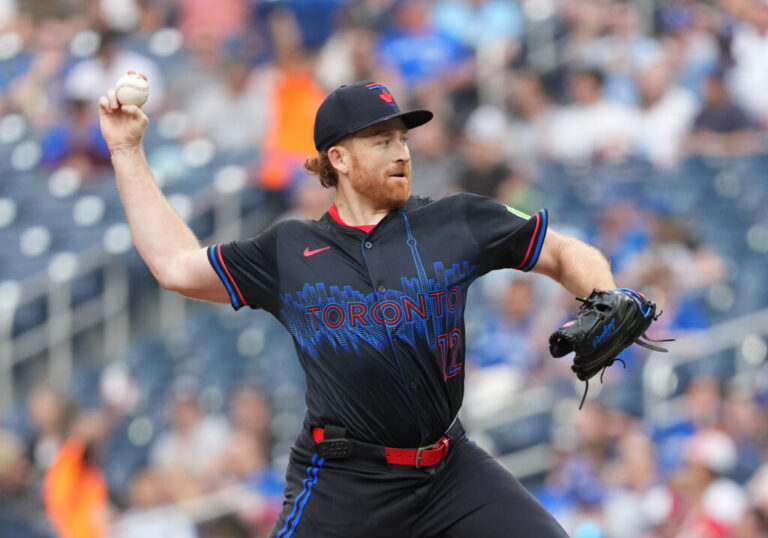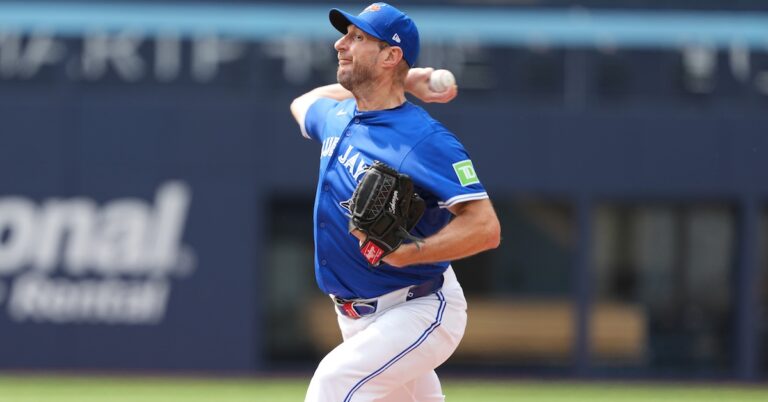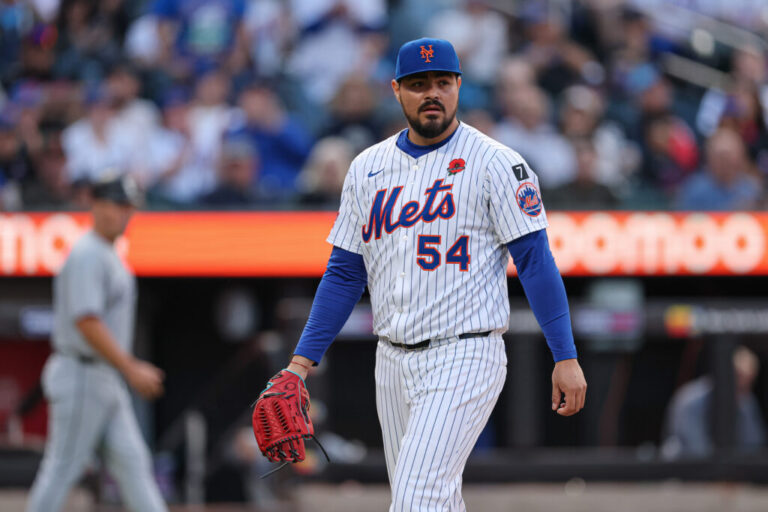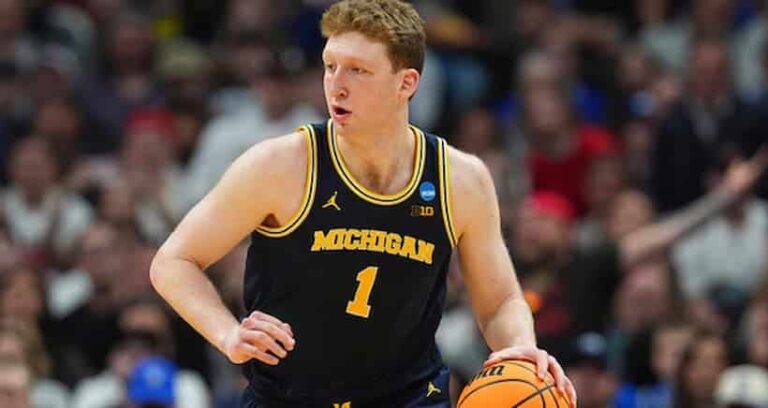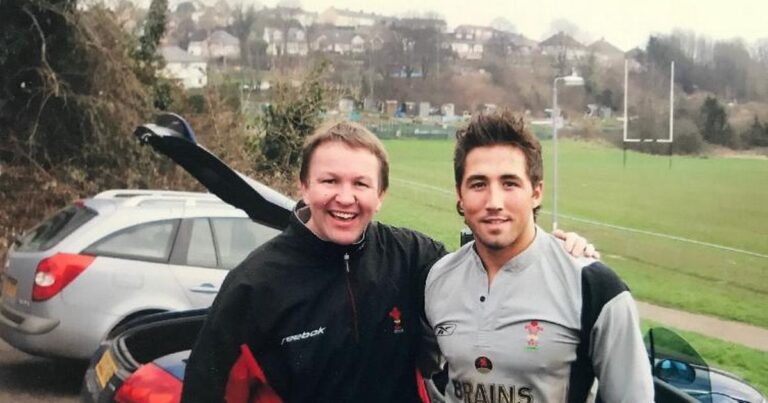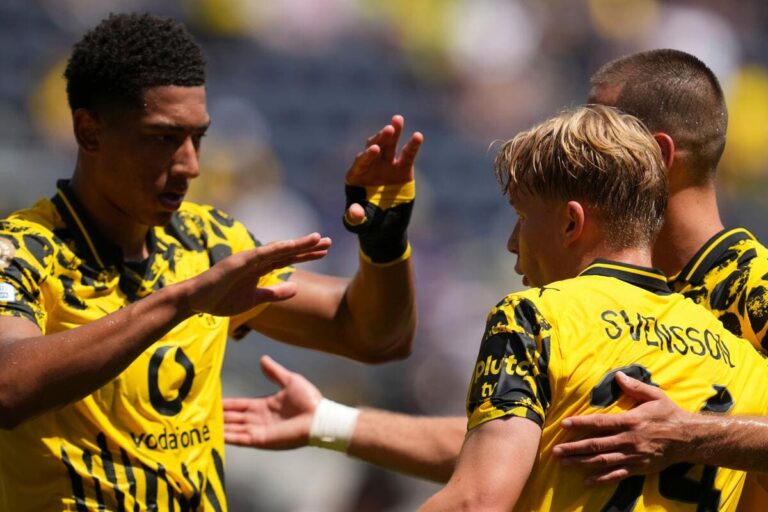
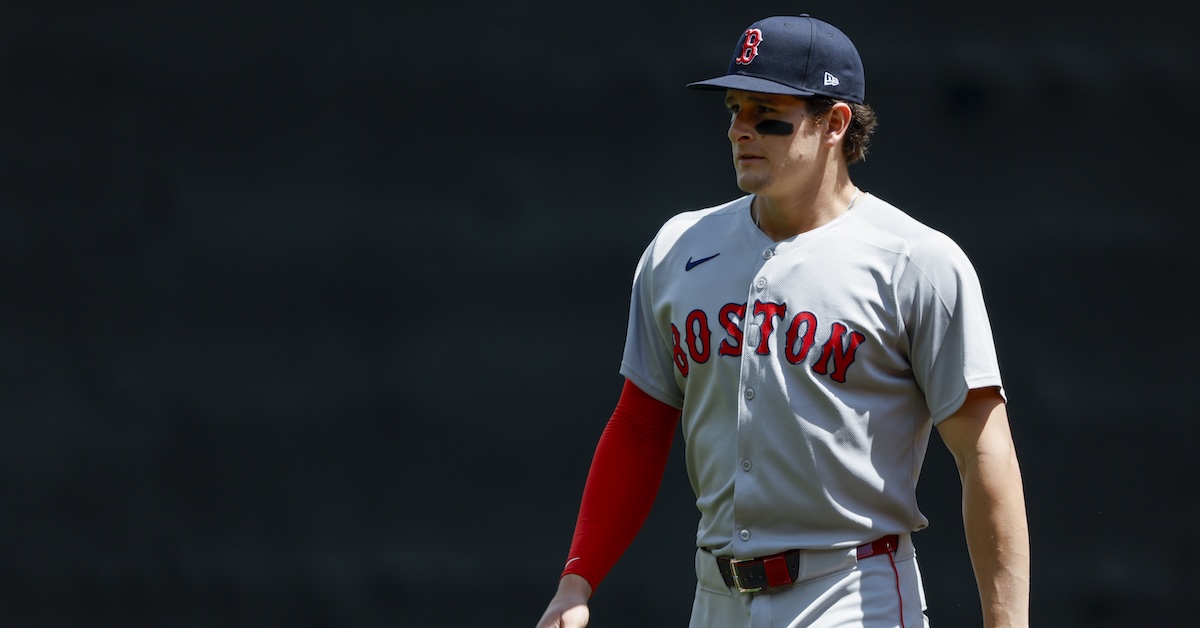
Below is an analysis of the prospects in the farm system of the Boston Red Sox. Scouting reports were compiled with information provided by industry sources as well as my own observations. This is the fifth year we’re delineating between two anticipated relief roles, the abbreviations for which you’ll see in the “position” column below: MIRP for multi-inning relief pitchers, and SIRP for single-inning relief pitchers. The ETAs listed generally correspond to the year a player has to be added to the 40-man roster to avoid being made eligible for the Rule 5 draft. Manual adjustments are made where they seem appropriate, but we use that as a rule of thumb.
A quick overview of what FV (Future Value) means can be found here. A much deeper overview can be found here.
All of the ranked prospects below also appear on The Board, a resource the site offers featuring sortable scouting information for every organization. It has more details (and updated TrackMan data from various sources) than this article and integrates every team’s list so readers can compare prospects across farm systems. It can be found here.
Other Prospects of Note
Grouped by type and listed in order of preference within each category.
Too Many Strikeouts for Main
Allan Castro, OF
Nazzan Zanetello, SS
Antonio Anderson, 3B
Freili Encarnacion, 1B/3B
Ahbram Liendo, INF
Castro’s offensive output took on a stronger power-over-hit flavor in 2024, as he slashed .243/.363/.449 at High-A before he tanked during the final month in Portland. He’s off to a pretty good surface-level start there in 2025 (with a wRC+ hovering around 130), but he has looming strikeout issues against better velocity from both sides of the plate. Castro will crush softer mistakes but is long into the zone. He’s playing center field but is a cleaner fit in a corner, more a 40-man fringe type unless he’s got another gear of power in the tank. Zanetello signed for $3 million in the 2023 second round and has yet to hit over .200 at any minor league level. It might be time to move him to the mound. Anderson has slid down the defensive spectrum to the point where he’s playing a combination of third and first base, and he’s not hitting enough for first. Encarnacion is a 20-year-old corner infielder with cartoonish bat speed and power but very crude feel to hit. He’s slugging over .500 this year, but I’m skeptical his hit tool will hold water versus upper-level arms. Liendo is 21-year-old infielder with a wrestler’s build. He can really play defense, but hasn’t performed even close to league average with the bat since 2023.
Catchers
Brooks Brannon, C
Ronald Rosario, C
Johanfran Garcia, C
Gerardo Rodriguez, C
Kleyver Salazar, C
Brannon is a 21-year-old power-hitting catcher who was a North Carolina commit but instead turned pro out of high school. A 20- or 30-grade hit tool and arm keep him off the main section of the list; he’s likely to be a right-hitting 1B/DH with plus power but not enough contact. He was moved up to Portland just before publication. After he K’d at a 30% clip in 2023, Rosario had a better season with the bat in 2024. He has roughly average raw power, nothing to scoff at for a 22-year-old catcher, but he needs to develop as a defender; below-average hands and arm accuracy undercut his good raw arm strength. Promising low-level performance made Garcia (Jhostynxon’s brother) a notable young Sox prospect, but a torn ACL squashed his 2024 season. He’s back and looks a good bit heavier and slower (in all facets, including his bat and his mobility on defense) than he did prior to the surgery. He’s someone to monitor as he gets further away from the surgery, but he doesn’t look great right now. Rodriguez is a precocious 19-year-old catcher who got a cup of coffee in Salem last year. He’s back in the FCL for the second consecutive year. Rodrigez’s swing is long, but he has good contact feel for a catcher. Salazar is a sensational athlete and good all-around defensive prospect with a plus arm, but the 19-year-old Venezuelan is unlikely to hit and currently sports a wRC+ just over 60 at Low-A.
Tough to Peg
Brady Tygart, RHP
Luis Cohen, RHP
These guys don’t fit in any other bucket, so they’re here on their own. The oft-injured Tygart was a 2024 12th rounder out of Arkansas who got hurt again (shoulder) in his first 2025 start. He was up to 96 in that outing and bending in two distinct breakers with 2,700-2,800 rpm. Cohen, 22, is an undersized Venezuelan A-ball starter with a fastball that touches 97 but plays down due to its shape and plane. His best pitch is a plus-flashing changeup, and in general, his secondary stuff is good enough to give him spot starter ceiling.
Old(s) Guys and Reclamation Projects
Eduardo Rivera, LHP
Wyatt Olds, RHP
Bryan Mata, RHP
Yovanny Cruz, RHP
Jorge Juan, RHP
Cooper Adams, RHP
Jack Anderson, RHP
Rivera, 22, is a 6-foot-7 Puerto Rican lefty who was originally drafted by the A’s and released in 2024. He’s being deployed as a starter at Greenville and is working in the 93-94 mph range while getting better miss performance out of his slider and changeup. Neither of those secondaries look plus to the eye, and there doesn’t seem to have been any kind of mechanical change here (his usage is different, that’s it), but Rivera is back on the radar as a potential reliever. Olds is a 25-year-old low-slot righty with a mid-90s fastball that plays down due to its shape and Olds’ lack of command. He throws a lot of upper-80s cutters to mitigate this and is a nice depth reliever currently in Worcester. Mata continues to throw hard but generate below-average swing-and-miss results with his sinker. He’s walking 5 per 9 IP in Worcester. Cruz was a Cubs prospect while Craig Breslow was working there. He’s a frustrating and oft-injured 25-year-old Dominican righty with upper-90s velo and plus-flashing secondary stuff. Plane/shape aspects of his fastball cause it to play down a great deal for a pitch averaging 98 mph. Juan (another former Athletic) was released by the Braves earlier this year, but he’s still notable because of his size (he’s 6-foot-8) and arm strength (sitting 96-97). Boston gets to take its turn developing him after Oakland and Atlanta could not. Adams is a 25-year-old 2024 undrafted free agent out of Mount St. Mary’s (by way of UMBC) who has a shot to be a sinker-balling low-slot reliever if he can harness his control. He’s sitting 94-95 at Greenville. Anderson is a 25-year-old righty at Portland who was one of Boston’s minor league Rule 5 picks last year. He’s pitching well in a swingman role with a 90-91 mph fastball and plus splitter. He should be able to lean on the split even more in a pure relief role.
Fastball Elevators
Jeremy Wu-Yelland, LHP
Noah Dean, LHP
Reidis Sena, RHP
This group tends to succeed when they land secondary pitches in the zone early in counts and then finish hitters by climbing the ladder with the fastball. Wu-Yelland is a low-slot lefty out of Hawaii who sits 94-95 and mixes in 90-mph cutters and low-80s sliders. He’s at Portland now, working with plenty of time off between appearances. He could be a lefty specialist, but let’s hold off on declaring that until this guy works on back-to-back days and throws strikes. Dean is a 24-year-old lefty reliever with a riding mid-90s fastball. He has long struggled with control, and he’s throwing most of his pitches for strikes less than 60% of the time again this year at Greenville. Sena has been a walk-prone reliever since he moved to the bullpen full-time in 2023. He elevates mid-90s fastballs and bends breakers into the top of the zone.
Young Hitters
Justin Gonzales, OF
Hector Ramos, SS
Avinson Pinto, SS
Anderson Fermin, OF
Gonzales had an absurd 2024, posting a 90% zone contact rate and 47% hard-hit rate as a 17-year-old in the DSL. He was more or less skipped over the domestic complex level and sent straight to Low-A this year. I absolutely want to give him some grace for being 18 in full season ball, but it does look like Gonzales’ 2024 was a result of physical maturity relative to his DSL peers more than big, legitimate tools. He’s a stiff, maxed-out athlete with a funky swing that doesn’t necessarily look like it will be able to catch up to good fastballs. Ramos, who signed for $500,000 in January, is another of the switch-hitting middle infield prospect archetype I value, and he has physical projection at an athletic 6-foot-1. Pinto and Fermin are relatively small FCL position player prospects who were nearly impossible to make swing and miss in the 2024 DSL. They both have what I’d describe as low impact styles of hitting, more in the slash-and-dash mold than anything generating impact right now.
Young Arms
Dalvinson Reyes, RHP
Jesus Travieso, RHP
Abis Prado, LHP
Reyes, 18, is a 6-foot-5 Dominican righty currently pitching on the Fort Myers complex roster. He’s working with below-average stuff right now, but obviously at this age and size, that might change. The 18-year-old Travieso is an athletic little 5-foot-11 righty who has been up to 98 on the complex and is sitting more 94-95. He’s very small, creating relief risk, and his lateral, mid-80s slider might benefit from greater depth. Prado is an 18-year-old Venezuelan lefty who has been up to 97 in the FCL. He has a slow, soft breaker in the 75-80 mph range and scattered control.
System Overview
This is the best farm system in baseball right now, and it will still be an above-average group when the youngsters who’ve gotten their feet wet in the big leagues are peeled off the top of this list due to graduation. It’s also the best right now even though the Red Sox parted with several good players when they made the Garrett Crochet trade. Roman Anthony is a graded a tier below what is typical for the top overall prospect in baseball at any given time. He’s not in the ZIP code of an Acuña or an Ohtani level prospect, nor is he quite as freaky as someone like James Wood (it’s close, though), but he essentially has too much power to fail. There are people in baseball who have argued to me over the last nine months or so that Kristian Campbell is the one with the more special characteristics, folks who see his uniquely brief journey to the majors as a sign that over time he’s going to be quite special, or who think Campbell will be able to play a valuable defensive position or two and is the real cornerstone of this farm and franchise. They’re radically different players, Kristian and Roman, with similarly exciting futures, despite Campbell’s early big league struggles. I think Marcelo Mayer is more volatile because of his issues with secondary pitches, but ultimately, like Anthony, he has so much lefty pop that he’ll hit well for a shortstop. Franklin Arias lines up right behind Kevin McGonigle on the Top 100 list; they’re both less overtly toolsy than power-hitting stars like Corey Seager and Carlos Correa, and more contact-driven and skills-oriented. Let’s see how Arias’ power and overall offensive performance trend throughout the second half. That group at the front of the 50 FV player tier is poised to move into the top 20 overall as this list cycle ends and the graduates in front of them disappear from my domain. These are foundational position player prospects who any team would love to have in their system.
On the pitching side, the Red Sox seem to covet big bodies, especially when they’re bigger guys who get way down the mound. They often alter the stride direction of the pitchers they acquire (from Brandon Clarke to Crochet) to create a tougher line on their fastball, and pitchers often throw harder after arriving here. Boston seems to encourage pitchers to work off their secondary stuff even when they’re fledgling prospects in the low minors. This can inflate the swing-and-miss performance of a given pitcher in the low minors, and readers/other clubs should be aware of this dynamic.
There are some commonalities to the way hitters in this system are being developed. Many of them end up with similar swings, as if the Red Sox have two or three core swing types that they try to give many of the hitters in their org. Enddy Azocar, for instance, now has a swing that’s mechanically similar to Mayer, Anthony (who was whiff-prone in high school and was made better in pro ball), Miguel Bleis, and several others. Sometimes the Red Sox are simply taking contact-oriented players and asking them to swing with more effort, while at others they’re making mechanical alterations. Both tactics have yielded generally positive results.
The Red Sox aggressively promote their prospects through the minors. At each level below Triple-A, the hitters on their rosters are among the youngest in their league. There’s less signal in the “young for the level” aspect of a player’s eval when it’s less about what they’ve earned and attained, and more about a clear organizational strategy. Whether that strategy is being employed for philosophical reasons related to player development and maturation, or because the Red Sox are trying to increase the standing of their prospects in the eyes of others teams’ pro scouting models via the age/level variable, is hard to say. A clearer truth: Some of these guys are in over their heads, and whatever favors an aggressive promotion does for their model-driven value is almost certainly negated when they’re hitting a buck eighty.
Obviously, this update is being published after the organization maimed its relationship with Rafael Devers and traded him for players who didn’t make much impact on the overall quality of this farm system. A self-imposed wound grew infected and a limb of the franchise was amputated. I think we can all imagine that running baseball ops for a multi-sport, international ownership group (Fenway Sports Group owns the Penguins, Liverpool F.C., a NASCAR racing team, and is involved in golf, among other ventures) may be complicated by unique budgetary dynamics, and the Sox perhaps weren’t allowed to eat money that would have improved their return. It’s still a bad look, and obviously big league success is a much better measure of organizational health than the quality of a farm system. But this is a great farm system, and the near and distant future of the franchise looks promising from a talent standpoint.
